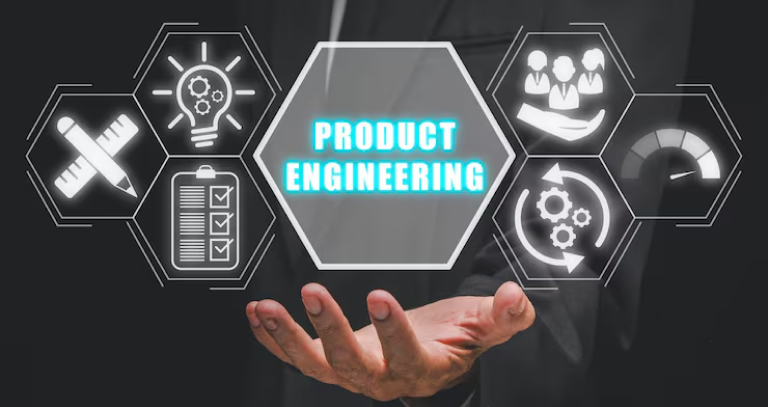How to Modernize Legacy Systems in Healthcare?
Ditstek Blogs
Legacy systems are still deeply embedded in healthcare. Despite the explosion of digital health tools, many healthcare organizations are still tethered to outdated, clunky software. If you’ve ever waited five minutes for a patient record to load or juggled three outdated tools just to schedule a follow-up, you know exactly what we are talking about. And while they may get the job done for now, they weren’t built for the complexity, scale, or speed modern healthcare demands.
Most decision-makers already feel the strain: limited interoperability, outdated interfaces, rising maintenance costs, and growing concerns around data security and compliance. Add to that the increasing pressure to adopt AI, enable remote care, and meet evolving patient expectations and the limitations of legacy systems become harder to ignore.
The reality is, legacy software actively holds organizations back from operational efficiency, innovation, and better care delivery. And worst of all, these outdated systems block you from leveraging modern capabilities like AI diagnostics, real-time analytics, or connected care.
That’s why modernization is becoming a practical necessity. It's a strategic decision that affects clinical outcomes, operational workflows, and your ability to compete in a rapidly evolving market.
The good news? You don’t have to do it all at once. And you don’t have to guess your way through it.
In this guide, we’ll unpack:
- What exactly counts as a legacy system in healthcare
- Why organizations hold onto them (and why that’s changing)
- How to Modernize Legacy Systems in Healthcare
- Real-world examples of what successful transformation looks like
Let’s get started.
Struggling with Outdated Systems?
Discover how modernizing your legacy healthcare infrastructure can boost efficiency and security. Let’s explore your options together.
What Is a Legacy System in Healthcare?
A legacy system in healthcare is any software, platform, or IT infrastructure that is still in use but no longer aligns with current technology standards or evolving business needs. This could be an outdated EHR, a scheduling tool running on aging code, or a billing platform that still requires manual data transfers.
These systems typically lack support for modern features like cloud integration, real-time analytics, or secure data sharing. They often rely on outdated coding languages, on-prem servers, or custom-built components that are expensive to maintain and difficult to scale. And the longer they remain in place, the more they slow you down. They drag on operations, inflate maintenance costs, and make it harder to adapt to new patient care models or embrace innovations like AI, IoT, and remote patient monitoring.
What’s more concerning? Many of these systems are mission-critical, meaning providers are stuck relying on tools they know are holding them back.
Types of Legacy Healthcare Systems
Here’s what most healthcare leaders are still dealing with:
- Electronic Health Records (EHRs): Older EHR platforms often lack interoperability, mobile access, or real-time syncing with other systems.
- Practice Management Systems: Scheduling, billing, and patient registration tools that run on outdated infrastructure or require manual processes.
- Radiology and Imaging Systems (RIS/PACS): Legacy imaging systems that don’t integrate well with newer diagnostic tools or cloud-based storage.
- Laboratory Information Systems (LIS): Systems that can’t handle modern data volume or integration with centralized platforms.
- On-Premise Infrastructure: Physical servers, local data centers, or desktop-based applications that block scalability and remote access.
- Clinical Decision Support Systems (CDSS): Older, rule-based systems that can't leverage real-time data or integrate with AI-driven tools for enhanced clinical decision-making.
- Health Information Exchange (HIE) Interfaces: Outdated or one-way data-sharing platforms that hinder seamless interoperability between different healthcare providers and systems.
- Patient Portals: Legacy portals that lack mobile optimization, real-time synchronization with EHRs, and intuitive user experiences.
- Medical Device Software / Embedded Systems: Legacy software running on outdated firmware, which is difficult to update, integrate, or secure with newer technologies.
- Supply Chain & Inventory Management Systems: Older procurement or inventory systems that don’t integrate with broader enterprise resource planning (ERP) platforms, slowing down efficiency and accuracy.
- HR and Payroll Systems: Legacy HR tools that don’t support modern features like remote onboarding, workforce analytics, or streamlined payroll processes.
- Telehealth Platforms: Outdated telemedicine tools that struggle with current privacy standards, video quality, or integration into clinical workflows.
- Revenue Cycle Management (RCM) Tools: Legacy RCM systems that require manual data entry, complicate billing processes, and don’t handle the complexities of value-based care.
Warning Signs Your Healthcare System Needs Modernization
Recognizing when your healthcare system is reaching its breaking point isn’t always obvious. However, if you’re experiencing any of the following, it's time to seriously consider modernizing.
1. Slow System Performance
If your systems are consistently sluggish, whether it’s loading patient records or generating reports, you’re losing time. It affects productivity and patient care. Every second matters in healthcare, and slow systems contribute to frustrating delays, inefficiencies, and, ultimately, poor patient experiences.
2. Frequent Downtime and Technical Issues
Frequent crashes, unexpected downtime, or issues with system availability are major red flags. If your team spends more time troubleshooting than serving patients, you’re clearly outgrowing your current system. Constant technical issues are not only a drain on your team’s productivity, they also disrupt patient care.
3. Limited Interoperability
Healthcare providers rely on smooth data exchanges to ensure holistic patient care. If your system can’t communicate effectively with others whether it’s lab results, imaging, or referrals, you’re working in silos. This limits your ability to deliver integrated care and makes it harder to meet modern regulatory standards like interoperability requirements.
4. Inability to Adapt to New Regulations
Healthcare is one of the most heavily regulated industries. If your system struggles to comply with evolving regulations like HIPAA, GDPR, or data security standards, you’re at risk. Legacy systems can’t adapt quickly to new requirements, leaving you vulnerable to compliance violations and penalties.
5. Difficulty Scaling
As your healthcare practice or hospital grows, so should your software. If your system can’t handle an increase in patients, data, or users, it’s a clear indication it’s time to modernize. Scalability is key to supporting growth without sacrificing performance or patient care.
6. Rising Maintenance Costs
Older systems tend to get more expensive to maintain over time. If you're constantly facing increasing repair costs or paying for workarounds, consider this a sign. Newer systems often offer a better return on investment, not just in terms of performance, but also in reduced maintenance and operational costs.
7. Poor User Experience
If your team members struggle with outdated interfaces or have to use multiple disconnected tools to perform simple tasks, it’s time for a change. A clunky, unintuitive system not only lowers productivity but also increases the chances of human error, which can directly affect patient safety.
8. Inability to Leverage Advanced Technology
AI, real-time analytics, and predictive tools are reshaping healthcare. If your legacy system can’t support these capabilities, you’re falling behind. Healthcare organizations that embrace AI-driven diagnostics, telehealth, and predictive maintenance are better equipped to deliver quality care and stay ahead in a competitive market.
Ready to Upgrade Your Healthcare Tech?
Modern systems mean better patient care and smoother operations. We’ll show you how.
Why Modernize Healthcare Software and What It Actually Involves
If your tech can’t evolve, neither can your organization. That’s the real issue with legacy software. It holds back innovation, slows down care delivery, and makes it harder to meet new regulatory and patient demands.
Modernization of legacy systems for healthcare removes the operational friction that these systems create across departments, processes, and care delivery.
Why healthcare leaders are rethinking legacy software:
- Security frameworks are outdated, and every patch feels like a short-term fix.
- Compliance is getting tighter, but the systems aren’t getting smarter.
- Teams are stuck doing manual work because automation doesn’t fit.
- Patients expect more. Digital-first experiences are now the baseline. If your systems can’t support that, you’re losing ground.
What healthcare software modernization actually involves:
- Replatforming: Move to cloud-native environments without rewriting everything.
- Refactoring: Optimize key modules to reduce friction and extend system life.
- Re-architecting: Restructure systems for flexibility, speed, and real-time interoperability.
- Replacing: Retire what’s no longer fit for purpose and start fresh with scalable tools.
What Healthcare Software Modernization Really Means
Modernization means aligning your tech stack with today’s demands: faster care delivery, better data visibility, stronger compliance, and smarter decision-making.
Here’s what that really involves:
Cloud Migration
Shifting from on-premise to cloud infrastructure goes beyond just flexibility. It’s about reducing costs and enabling remote access, which makes collaboration smoother and ensures faster disaster recovery when things go awry. The cloud also enables continuous updates and easier integration with external systems.
Microservices Architecture
Instead of one monolithic platform, you break it down into independent components that can be updated, scaled, or replaced without disrupting everything else. That’s how you move fast without breaking core functions.
API-First Development
API-first design ensures your platform can communicate effortlessly with labs, imaging centers, EHRs, and third-party apps. This creates a truly interoperable ecosystem, making collaboration and data exchange simpler and more efficient.
Enhanced Cybersecurity
With growing attack surfaces, legacy systems simply aren’t built to protect against modern threats. Modernization addresses this by embedding robust security from the ground up, such as end-to-end encryption, zero-trust access, identity management, and audit trails. These features are essential in today’s regulatory environment.
Automation & AI-Readiness
Modern platforms are designed to support advanced technologies like AI-driven diagnostics, predictive analytics, and intelligent automation. This means your system doesn’t just store data; it helps extract insights, flag risks, and drive decisions.
Reduce Costs & Risks With Smart Modernization!
Learn how to replace outdated systems with scalable, secure, and compliant solutions.
How to Modernize Legacy Medical Systems: Step-by-Step

Modernizing legacy systems is about moving from outdated, fragmented software to a streamlined and adaptable system. Modern software can handle today’s demands faster, smarter, and with greater security. Here’s a step-by-step approach to help you get there:
1. Assess Your Current Systems
Before you start making changes, you need to understand exactly where you stand. What systems are outdated? What’s working, and what’s dragging you down? Conduct a comprehensive audit across all departments: patient management, billing, diagnostics, and more. The goal is to pinpoint bottlenecks, security risks, and areas that lack scalability.
2. Define Your Business Objectives
Modernization aligns your software with your healthcare organization’s goals. Are you focusing on improving patient experience? Enhancing operational efficiency? Preparing for AI and telehealth? Set clear objectives that guide your tech decisions and help you prioritize the most impactful changes.
3. Choose a Modernization Strategy
There are several ways to modernize whether you choose a complete overhaul or a more gradual, phased approach. Some common strategies include:
- Replatforming: Shifting your system to a newer platform (e.g., moving to the cloud).
- Refactoring: Redesigning core components of your software to work within modern frameworks without starting from scratch.
- Replacement: In some cases, it’s best to replace legacy systems entirely with more advanced solutions.
Choose the strategy that fits your organization’s capacity and long-term goals.
4. Plan for Interoperability
Healthcare systems must communicate with each other to deliver integrated care. As you modernize, ensure your new systems are compatible with external platforms like EHRs, labs, insurance providers, and other third-party apps. Investing in API-first architecture is key for smooth data sharing and future-proofing.
5. Prioritize Security & Compliance
Upgrade your cybersecurity infrastructure to comply with regulations like HIPAA and GDPR. Implement robust encryption, identity management protocols, and multi-factor authentication. This not only protects sensitive data but also builds trust with patients.
6. Embrace the Cloud
The cloud offers scalability, flexibility, and cost-efficiency that on-premise systems can’t match. Transitioning to the cloud can enable real-time collaboration, streamline operations, and allow you to scale resources as needed. Start with a hybrid approach if you need to maintain some on-premise systems while you migrate other functions.
7. Integrate AI & Automation
As part of the modernization process, consider integrating AI-powered tools that can enhance decision-making, streamline workflows, and boost diagnostic accuracy. AI Software development helps to automate repetitive tasks to free up staff and let them focus on higher-value patient care and reduce human error.
8. Test, Test, Test
Testing is critical to ensure everything works as intended. Run pilot tests for key functionalities like patient data flow, billing systems, and EHR integrations, before full deployment. Identify any glitches or performance issues early, so they don’t derail the process later.
9. Train Your Team
A modernized system is only as good as the people using it. Invest in training your staff to maximize the value of new tools and processes. This includes training on new interfaces, AI-powered decision-making tools, and enhanced security protocols. The more comfortable your team is, the smoother the transition will be.
10. Monitor, Maintain, and Iterate
Post-launch, monitoring is crucial. Keep track of system performance, user feedback, and security incidents to address potential issues before they escalate. Make continuous improvements by adding features, upgrading security, and refining integrations as needed.
From Legacy to Leading-Edge!
We help healthcare providers move beyond outdated tech and into the future of digital health.
Use Cases of Healthcare Legacy System Modernization

Here are a few real-world scenarios where updating legacy systems has made a measurable impact:
1. Streamlining EHR Systems Across Facilities
Problem: A multi-site hospital network was using different EHR systems across departments, none of which could communicate with each other.
Modernization Move: They migrated to a cloud-based, interoperable EHR platform with unified data access.
Result: Physicians gained a full patient view across locations, reducing redundant tests and improving diagnosis speed.
2. Enabling Remote Patient Monitoring
Problem: An aging system couldn’t integrate with wearables or collect real-time vitals from home-monitoring devices.
Modernization Move: APIs were implemented to connect IoT devices with the central patient data system.
Result: Care teams could monitor high-risk patients remotely, enabling faster intervention and reducing hospital readmissions.
3. Improving Revenue Cycle Management (RCM)
Problem: Manual billing processes and disconnected insurance claim tools caused delays and errors in reimbursement.
Modernization Move: Legacy RCM software was replaced with an automated, AI-assisted platform.
Result: Claims processing became faster, denials dropped, and revenue leakage was reduced significantly.
4. Enhancing Diagnostic Accuracy with AI Integration
Problem: An older radiology system couldn’t support AI-assisted image analysis or connect with cloud-based storage.
Modernization Move: The imaging system was refactored to support AI algorithms and integrated cloud archiving.
Result: Faster, more accurate diagnostics and reduced time-to-treatment, especially in oncology and neurology cases.
How Ditstek Innovations Helps
At DITS, our team brings more than just technical know-how. We offer strategic direction, domain expertise, and hands-on support from planning through execution. Our approach to legacy system modernization is rooted in deep healthcare expertise and hands-on execution. We help providers move from rigid, outdated systems to agile, future-ready platforms with minimal disruption and maximum impact.
What we bring:
Custom Modernization Strategy: Whether it’s EHR refactoring or full-stack redevelopment, we tailor the approach to your operational needs and business goals.
Cloud-Native Architectures: We migrate legacy infrastructure to the cloud for better performance, scalability, and remote access.
Interoperability-First Design: Our engineers build APIs and data bridges that help your systems talk to each other securely and in real time.
AI & Analytics Readiness: From enabling real-time clinical decision support to predictive maintenance in connected medical devices, we ensure your stack is future-ready.
Compliance-Driven Development: Built-in adherence to HIPAA, FHIR, HL7, and other healthcare standards.
Iterative Delivery, Measurable ROI: We modernize in phases, showing value at every step.
Whether you're looking to optimize a legacy EHR or overhaul your entire backend infrastructure, Ditstek helps you move faster with confidence.
FAQs on Healthcare Legacy System Modernization
1. What qualifies as a legacy system in healthcare?
A legacy system is any software, platform, or infrastructure that no longer meets current performance, interoperability, or security standards. Common examples include outdated EHRs, billing systems, on-prem servers, and standalone scheduling tools.
2. Why do healthcare providers hold on to legacy systems?
Usually because they’re mission-critical, deeply integrated into workflows, or expensive to replace. But as compliance risks and inefficiencies grow, the cost of maintaining them often outweighs the cost of modernization.
3. Is modernization always a complete system replacement?
No. Modernization can be gradual. You can refactor parts of the system, migrate to the cloud in phases, or wrap legacy components with APIs to improve performance and integration.
4. How long does a typical modernization project take?
Timelines vary based on complexity. Smaller upgrades or cloud migrations can take a few months. Full-scale reengineering might take 6–12 months or more, depending on the size of your systems and data.
5. What are the risks of not modernizing legacy systems?
Delays in patient care, rising costs, inability to scale, security vulnerabilities, and falling behind on industry standards like interoperability and value-based care.
6. What role does a technology partner play in modernization?
A strategic partner helps you assess legacy infrastructure, prioritize upgrades, minimize downtime, and ensure compliance while implementing scalable, future-ready solutions.
7. How do I choose the right modernization strategy?
Start with a comprehensive assessment of your current systems. Define business goals, compliance needs, and patient expectations then align your tech roadmap accordingly.

Nidhi Thakur
With more than 19 years of experience - I represent a team of professionals that specializes in the healthcare and business and workflow automation domains. The team consists of experienced full-stack developers supported by senior system analysts who have developed multiple bespoke applications for Healthcare, Business Automation, Retail, IOT, Ed-tech domains for startups and Enterprise Level clients.
Recent Posts
Get in touch










